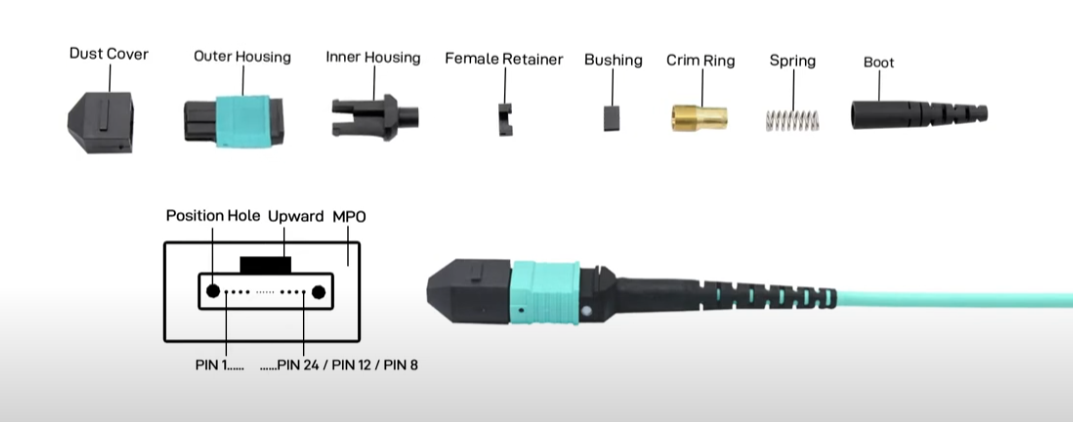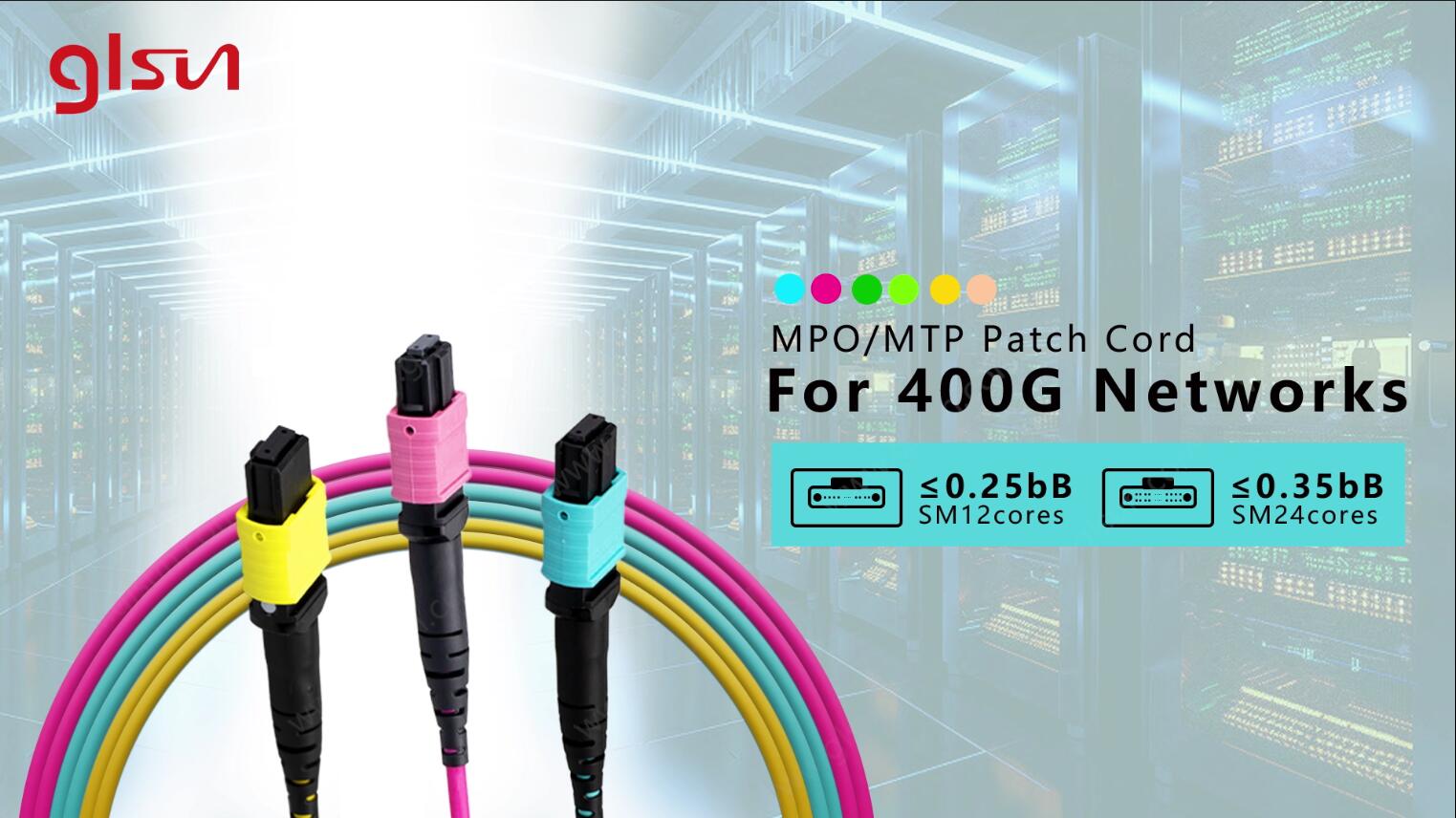What are the Key Performance Indicators of MTP/MPO Fiber Cables?
2024-10-26
MTP/MPO fiber cables play a pivotal role in modern data transmission infrastructure, supporting the high-bandwidth demands of data centers, telecommunications, and other advanced applications. To ensure optimal network performance and reliability, it is crucial to understand the key performance indicators (KPIs) of these cables.

1. Insertion Loss (IL)
Insertion Loss is a fundamental metric that measures the amount of signal power loss a fiber cable experiences during transmission. For MTP/MPO cables, lower IL is always better, as it directly impacts signal quality and data transmission efficiency. Typically, IL is measured in decibels (dB), and most high-performance MTP/MPO cables offer IL below 0.35 dB. However, it’s crucial to note that actual IL may vary based on the cable's quality, manufacturing precision, and environmental factors such as temperature and installation handling. Consistently low IL means that the cable can support long-distance transmissions without degradation, which is essential for high-bandwidth applications, like data centers and cloud services.
2. Return Loss (RL)
Return Loss refers to the amount of signal reflected back toward the source in a fiber optic link. In the context of MTP/MPO fiber cables, a higher RL is desired, indicating minimal signal reflection and, consequently, less interference. Return Loss is influenced by the cable’s material, connector quality, and physical handling. The industry standard for RL in MTP/MPO cables is generally above 20 dB. High RL is critical, especially for network configurations that require high signal fidelity, such as in high-speed Ethernet applications and distributed cloud environments. Higher Return Loss values ensure that each bit of data transmitted is clear and precise, minimizing packet loss and maximizing throughput.
3. Polarization Mode Dispersion (PMD)
PMD is an optical phenomenon that can limit data rates and transmission distances. It occurs when light waves travel through a fiber at slightly different speeds, causing signal distortion over long distances. PMD is measured in picoseconds per kilometer (ps/km), and lower values are preferable to avoid data transmission errors. In MTP/MPO fiber cables, keeping PMD values within an acceptable range is essential for applications requiring very high data rates, such as 100G, 200G, or even 400G Ethernet. Cable manufacturers often specify a maximum PMD value of less than 0.1 ps/km, which is suitable for ultra-high-speed data centers.
4. Connector Durability
Given that MTP/MPO cables are often plugged, unplugged, and reconfigured frequently, connector durability becomes a crucial KPI. The standard durability for connectors is around 500 to 1,000 mating cycles; however, high-quality MTP/MPO connectors may exceed this range, offering upwards of 1,500 cycles. For organizations that frequently modify network setups, investing in MTP/MPO cables with robust connector durability ensures consistent performance and reduces maintenance costs associated with connector wear and failure. High-durability connectors also minimize the risk of signal degradation, making them suitable for mission-critical network environments.
5. Flexibility and Bend Radius
MTP/MPO fiber cables are often installed in environments where space is at a premium, making flexibility and bend radius essential factors. The bend radius of a cable refers to the minimum radius one can bend the cable without degrading its performance. A smaller bend radius is advantageous as it allows the cable to navigate tight spaces without signal loss. For MTP/MPO fiber cables, a bend-insensitive design can be beneficial as it ensures signal integrity even under tight bends. The ideal bend radius for MTP/MPO fiber cables is typically less than 10mm, making them suitable for high-density installations.
6. Crosstalk and Interference Resistance
In high-density installations, cables are often run parallel to one another, which can lead to crosstalk—unwanted interference between signals in adjacent cables. Effective MTP/MPO cables are designed to minimize crosstalk through enhanced shielding and precise manufacturing techniques. High crosstalk can lead to packet errors, slow down data transmission, and compromise the performance of high-speed networks. Cables with optimized crosstalk resistance are crucial for data centers where hundreds or thousands of cables may be bundled together.
7. Environmental Suitability and Temperature Stability
Depending on the deployment environment, MTP/MPO fiber cables may be exposed to temperature fluctuations, humidity, and physical stress. High-quality MTP/MPO cables are built to withstand temperatures ranging from -40°C to +85°C, making them suitable for both indoor and outdoor installations. Temperature stability ensures that insertion loss and return loss remain within acceptable ranges even in variable environmental conditions. When selecting MTP/MPO cables, it is essential to consider whether they are rated for the specific environment where they will be installed, as this can prevent premature aging and performance degradation.
8. Compliance with Industry Standards
Compliance with standards, such as TIA/EIA-568 and IEC 61754-7, ensures that MTP/MPO cables meet global benchmarks for performance, safety, and compatibility. Compliance with such standards means the cables are manufactured under stringent quality controls, which is critical for consistent performance. Many industry standards also specify guidelines for insertion loss, return loss, and other key performance metrics, providing peace of mind that the cable will perform as expected in a professional environment. When selecting MTP/MPO fiber cables, ensuring they are compliant with these standards can prevent compatibility issues and ensure reliable network performance.
9. Ease of Installation and Compatibility
MTP/MPO cables, especially those with higher fiber counts, can be complex to install. Therefore, it’s essential to choose cables designed for easy installation, with features like color-coded connectors, polarity markings, and pull tabs. Compatibility with existing network infrastructure, such as transceivers and patch panels, is also critical to avoid unnecessary reconfiguration and downtime. MTP/MPO cables with modular designs are particularly useful in scalable data centers, as they can easily be adapted to meet growing data demands.
Selecting an MTP/MPO fiber cable involves a deep understanding of these KPIs and their relevance to your network’s performance and scalability. GLSUN offers a range of MTP/MPO fiber cables that meet stringent performance benchmarks, suitable for both standard and high-density data centers. Visit GLSUN’s MTP/MPO Fiber Cable collection for more information and explore options to enhance your network’s efficiency and resilience.








